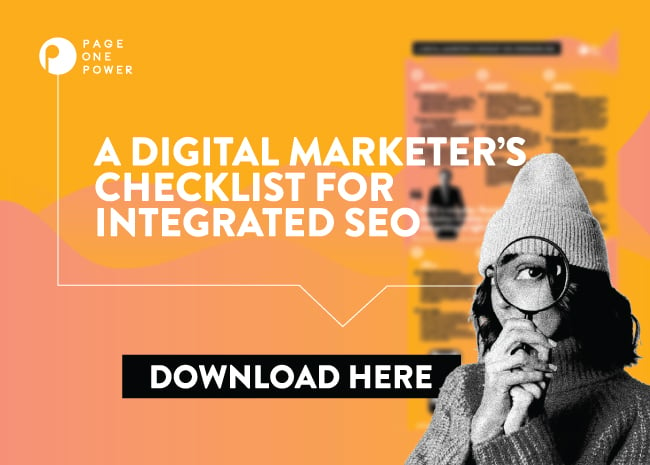GEO Targeting Definition & Best Practices
Geo-targeting is a marketing strategy that utilizes searcher location data. This data is gathered from a variety of sources to help local businesses directly target their priority audiences.
Marketing by Location: What Is Geo-Targeting?
Geo-targeting is a technique often used in local marketing campaigns. Geo-targeting uses different types of searcher location data, collected from internet-capable devices, to deliver location-specific ads to searchers in priority areas. This type of marketing strategy can be particularly useful for businesses that rely on location-specific consumers for conversions or sales. This strategy can be used by brick-and-mortar businesses and e-commerce businesses alike to provide highly relevant ad messaging as well as support conversion and click-through rates.
How Does Geo-Targeting Work?
Geo-targeting campaigns use location data, including the IP address, Wi-Fi signal, and GPS signals from internet-capable devices to help pinpoint a user’s location and serve them more relevant ads. A targeted location can range from a country to a single zip code. When creating your geo-targeting campaign, there are two location targeting strategies you can go with — opt-in and opt-out.
Opt-In Targeting
The opt-in strategy may be closer to your ad platforms’ default. It casts a wide net, covering several related areas in order to appeal to anyone with the potential to be in your target area. This can be a fine strategy for business owners who aren’t looking to specifically maximize their PPC investment and are more concerned about quantity lead generation.
Opt-Out
Alternatively, the opt-out strategy is where you purposely exclude, or opt-out, non-priority areas from receiving your ads. This can help you maximize your PPC investment and support quality lead generation. Site owners can use the customization features on ad platforms they work with to define their desired locations, as well as which locations to exclude.
Radius Targeting
Radius targeting is a more specific version of geo-targeting offered by Google. With radius targeting, you can increase your keyword bid, or how much you’re willing to pay for a click on your ad, in a specific radius. The price of your bid will help decide where your ad will show up in the SERP. The higher the bid, the better chance you have of ranking higher in that radius. The radius for these campaigns is typically centered around a store-front or office. This can be a useful strategy for businesses that profit off of increased foot traffic, such as restaurants.
Why Use Geo-Targeting?
Geo-targeting can help you provide relevant and appealing ad messaging to your desired audience. By working within a target location, you can leverage local events, news, culture, and offers to appeal to your desired area. Geo-targeting can also help search engines, like Google, understand and index your site or landing pages for local keywords. This can help your pages rank well in related SERPs, supporting further site visibility. Businesses that rely on local traffic, such as brick-and-mortar stores, local restaurants, and sites with local delivery services, may see big improvements to local visibility by employing this type of marketing campaign.
SEO Keyword Research
Read our comprehensive SEO keyword research guide to learn how you can get your web pages to show up higher in the SERPs.
Link Building Guide
Check out our ultimate link building guide to learn how to earn powerful backlinks to empower your web content in search.
Best Practices for Geo-Targeting
Before you can start sending out targeted ads, you need to create optimized content. When creating geographic marketing ads and landing pages, here are some best practices to be aware of.
Be Specific
You’ll want to make sure that your campaign is targeting searchers in your location, not searchers searching for your location. While both can be valuable, the audience of those registered in your area is likely to be larger and more relevant to your goals. You can make this delineation through your ad platform settings. Other specific considerations that may change base on your target location include:
- Language;
- Currency;
- Visuals;
- Cultural considerations.
These considerations can have an impact on how relevant and appealing your ads are to your desired audience.
Incentivize
According to Search Engine Land’s location-based marketing coverage, consumers are more likely to share their location data if they believe they are receiving something of value in return. This could be in-store coupons, local discounts, loyalty points, or exclusive content. Incentivizing a local audience can help further conversion efforts and instill a sense of value around your business or service in your target audience. Creating value for your audience is a crucial part of any marketing campaign, as it helps create exposure for your content and helps you build and maintain your client base.
Prioritize Accessibility
Reaching your target audience may have little value if that audience can’t reach you in return. Prioritizing contact accessibility, such as landing pages and location citations, is crucial for getting the most out of the clicks generated by geo-targeting. You can add contact information, including your website, phone number, and address to your local citations on Google through your Google My Business account.
Is Geo-Targeting Worth It?
The most room for optimization with geo-targeting lies with local services. If your business relies on the local community for sales or traffic, then using geo-targeting and marketing to that specific audience is a great way to support your conversion and local visibility efforts. If your business or site doesn’t rely as heavily upon these local conversions, geo-targeting can still help you by capitalizing on searchers already in your area.
Geo-targeting is just one type of marketing campaign that can help improve your site’s performance and conversion rate. Employing a combination of many types of campaigns, including link building and other keyword-focused content, can be the best way to support your site’s long-term SEO growth.

